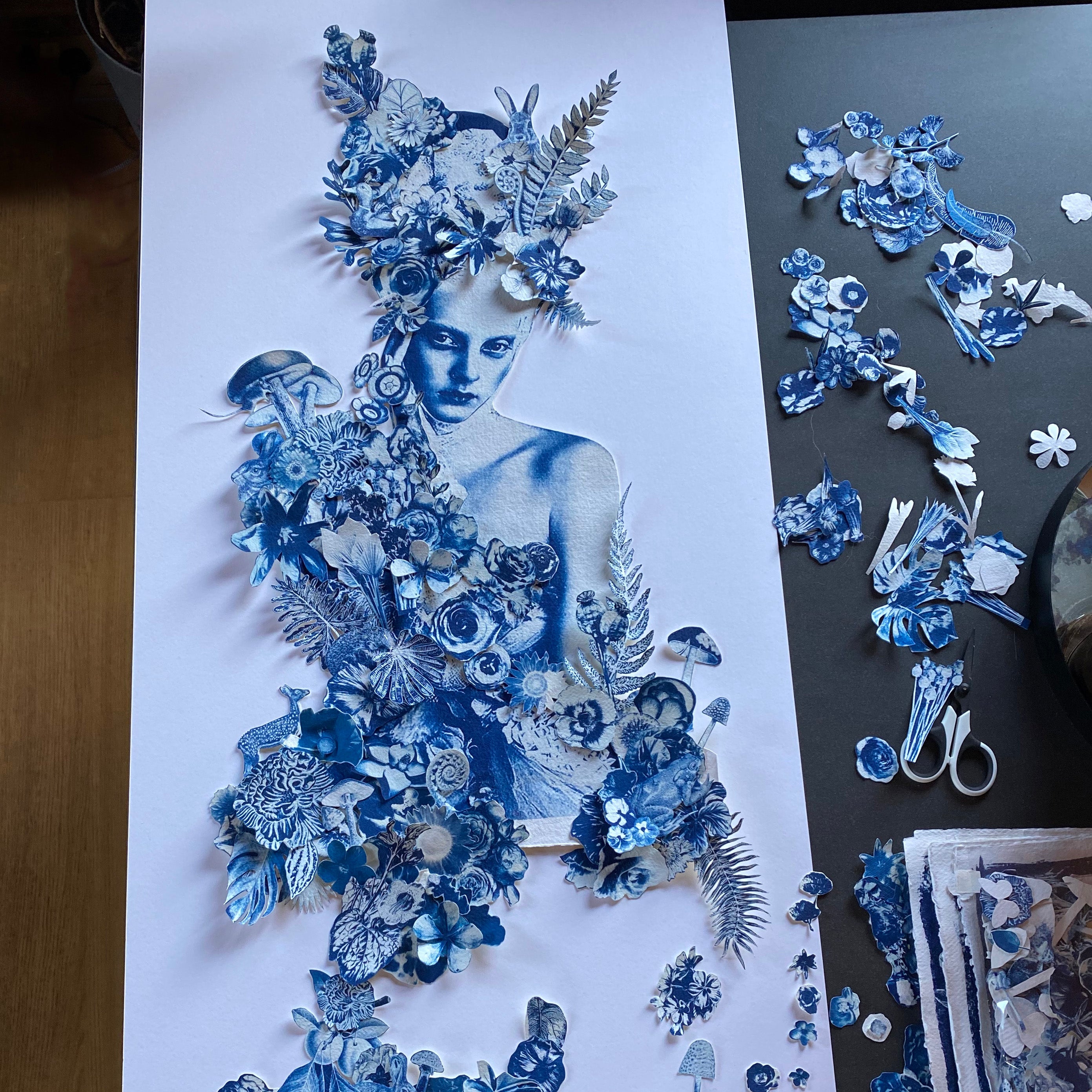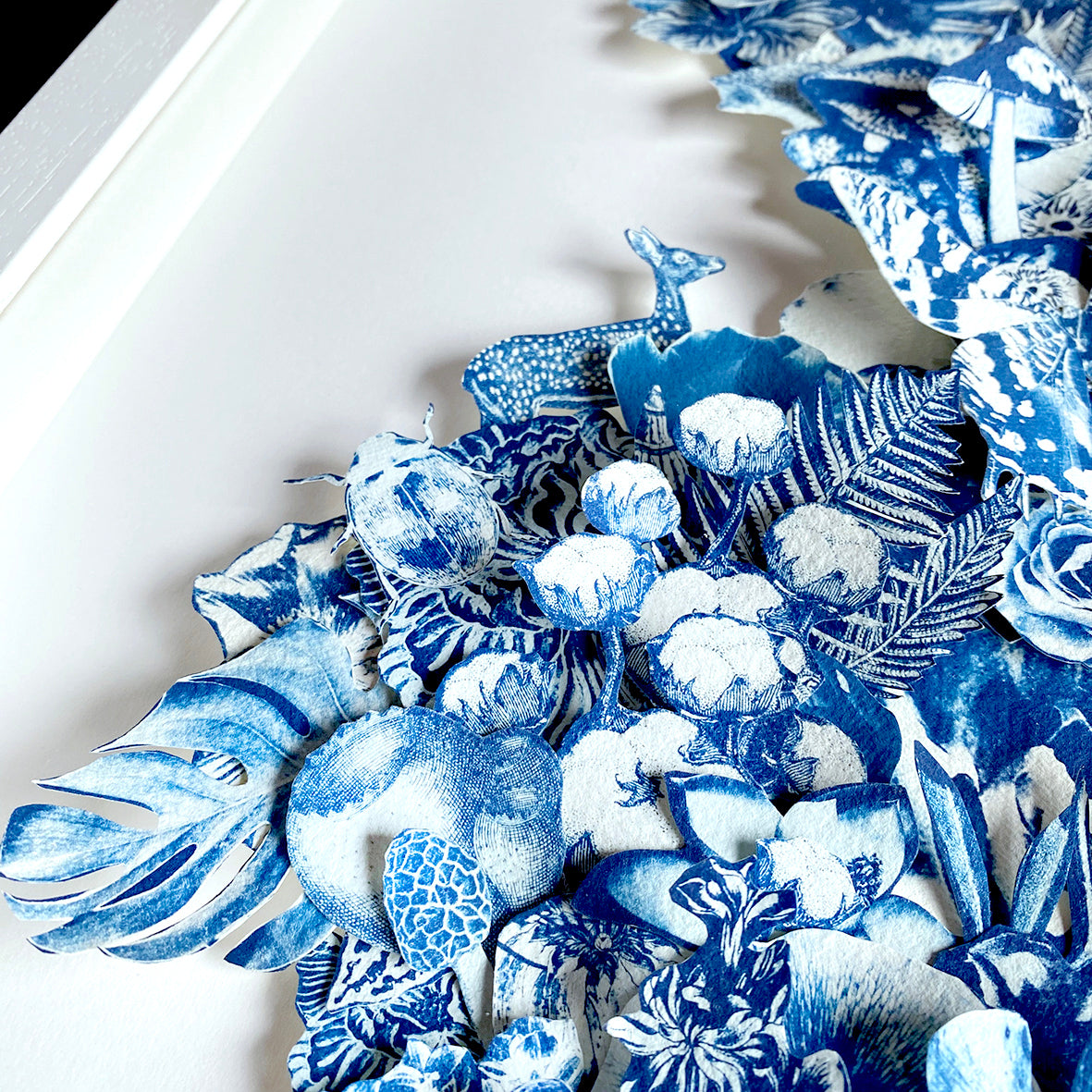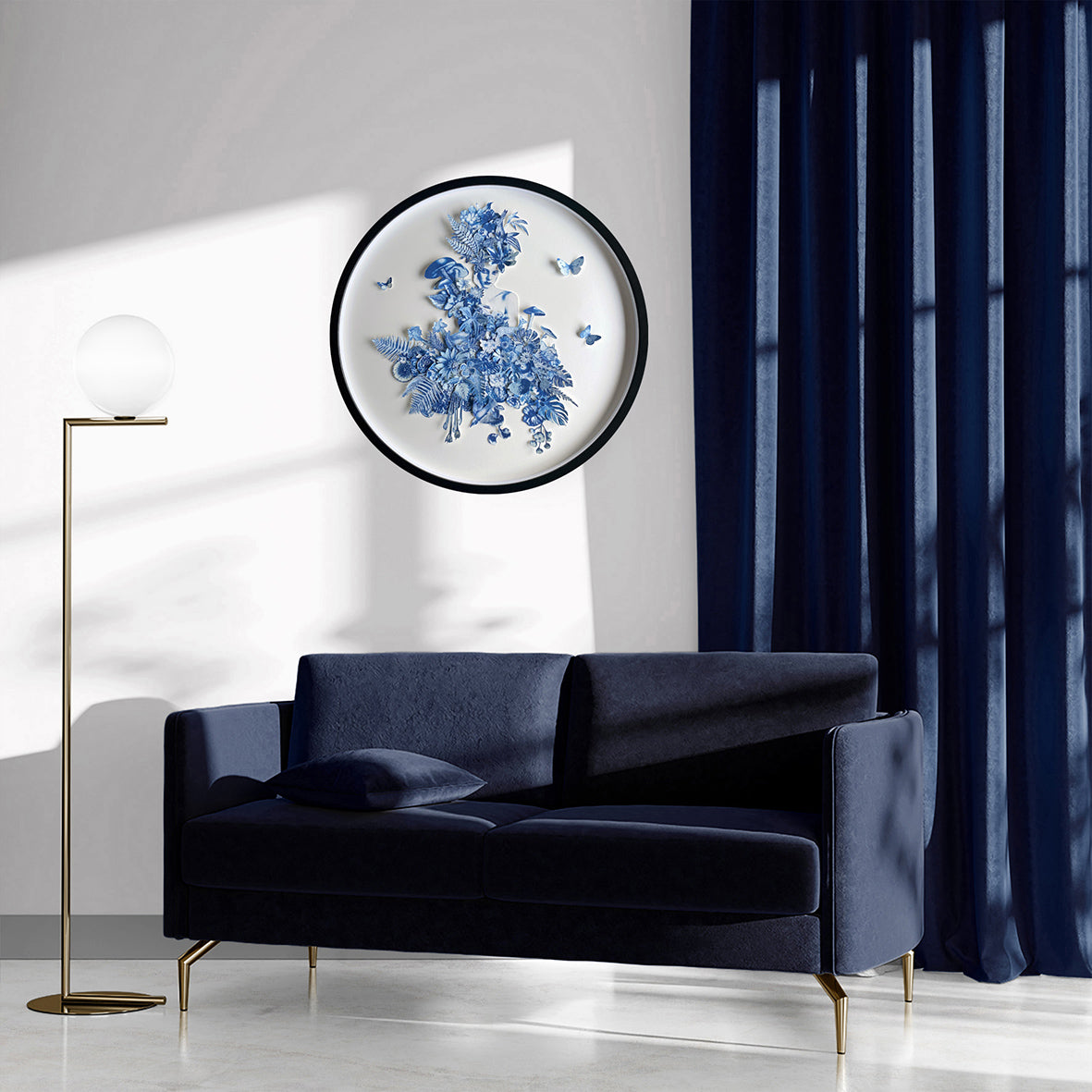
The Making of My Most Intricate Papercut Cyanotype
I am thrilled to announce that my most intricate papercut work inspired by Beatrix Potter sold at The Other Art Fair Brooklyn a few weeks ago! 🙏🏻💗
This artwork took almost 11 months to complete, and I was so proud of the final result.

I was excited when this piece was selected by senior curator Megan Wright to feature in the Saatchi Art New Discoveries Spring mail-out, which went to homes all across the USA. I was featured in the section highlighting:
' Innovative sculptors and genre-bending artists keep London at the forefront of contemporary art. Revel in the British artists' unique and distinctive art. '

The Inspiration: Beatrix Potter
Beatrix Potter was an English author, illustrator, conservationist, and mycologist. Beloved by generations of readers, she was best known for her children's books, such as "The Tale of Peter Rabbit." Potter had a deep appreciation of nature, and her passion for the natural world played a major role in her life and work. She was an advocate for preserving the natural world, and her books featured themes of conservation and environmentalism.
Potter also had a keen interest in the study of mushrooms and other fungi. She was a member of the British Mycological Society, and her illustrations and scientific drawings of mushrooms and other fungi were highly respected by her peers.

The Technique
"The Tale of Beatrix Potter" was created by constructing a hand-cut collage using female photographic portraiture combined with photograms, photographs, and illustrations of flora, fauna, animals, and insects from my private collection. These were gathered, pressed, and preserved from my childhood garden, using scientific textbooks and Potter’s Peter Rabbit collection as references.

Paper Making
The paper is handmade and constructed from scratch, fabricating the paper from cotton rags. I aim to give new life to an otherwise discarded material by reusing, recycling, and reinventing—starting the life cycle and building up the layers.
Cyanotype Printing
After coating the handmade paper and watercolour sheets with light-sensitive chemistry, they are left to dry in a dark room. The large-scale negatives are then contact printed onto the paper by exposing it to daylight (UV rays). The prints are then processed by thoroughly washing in water to remove any unexposed solution. They are then hung to dry, developing to full-density Prussian blue after 24 hours. Once dried, the individual component parts are cut out and mounted onto the print to create a multi-layered, 3-dimensional artwork.

Huge thanks to all of the team at Saatchi Art and The Other Art Fair for championing emerging artists from around the globe. Your support is invaluable, and I am proud to be a part of such a wonderful community.
I hope you enjoy some of these WIP shots, for what was a labour of love!









Discover Beatrix Potter























Leave a comment
This site is protected by hCaptcha and the hCaptcha Privacy Policy and Terms of Service apply.